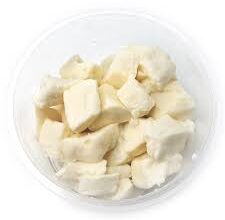KapustaPusto: The Perfect Kapusta Recipe

Welcome to the world of KapustaPusto, the perfect Kapusta recipe, where tradition meets innovation and flavor takes center stage. Eastern European cuisine has long been celebrated for its rich cultural heritage and diverse culinary traditions. And at the heart of it all lies KapustaPusto, a beloved dish that symbolizes unity within the community and showcases the face of modernity.
But what exactly is KapustaPusto? Well, my friend, you’re about to embark on a delicious journey filled with cabbage galore and tantalizing flavors. In this blog post, we’ll explore the art of crafting the perfect Kapusta recipe – from its humble origins to its status as a staple of Slavic tables.
So grab your apron, sharpen those knives, and let’s dive into the world of KapustaPusto together! Whether you’re already familiar with this mouthwatering dish or looking to expand your culinary horizons, we’ve got everything you need right here. Get ready to unleash your inner chef as we unlock the secrets behind creating an unforgettable Kapusta experience.
KapustaPusto requires attention to detail and an understanding of its key ingredients. Cabbage takes center stage in this dish, providing not only great taste but also health benefits as it’s rich in dietary fiber. Potatoes add texture while carrots bring sweetness to balance out the flavors.
The Key Ingredients for a Delicious Kapusta Dish
The key to crafting the perfect Kapusta dish lies in selecting the right ingredients. This traditional Eastern European cabbage dish can be customized to suit your taste preferences, but there are a few essential components that should never be overlooked.
First and foremost, you’ll need a head of fresh cabbage. Look for one that is firm and dense, with vibrant green leaves. The cabbage will serve as the base for your Kapusta, providing that distinct flavor and texture.
Next up are potatoes and carrots. These hearty vegetables add depth to the dish while complementing the natural sweetness of the cabbage. Opt for waxy potatoes like Yukon Gold or red potatoes, as they hold their shape better during cooking.
Onions are another must-have ingredient in KapustaPusto. They provide a savory undertone and help enhance the overall flavor profile of this beloved dish. Sauteeing them until golden brown before adding other ingredients will bring out their natural sweetness.
To give your Kapusta a slightly tangy kick, don’t forget about tomatoes! Fresh or canned diced tomatoes work well; just make sure to choose high-quality ones bursting with flavor.
Spices play an important role in elevating the taste of KapustaPusto. Classic choices include bay leaves, caraway seeds, paprika, salt, and pepper – all contributing their unique flavors to create a harmonious blend.
Remember: experimentation is encouraged! Feel free to add additional ingredients such as mushrooms or smoked meats for extra richness or complexity if desired.
Step-by-Step Instructions on How to Prepare the Perfect Kapusta Recipe
Step 1: Gather Your Ingredients
Before embarking on your kapusta-making adventure, make sure you have all the necessary ingredients. You’ll need a head of cabbage, potatoes, carrots, onions, garlic, bacon or smoked sausage for added flavor, and some spices like salt and pepper.
Step 2: Prepare the Cabbage
Start by carefully removing the outer leaves of the cabbage. Then slice it in half and remove the core. Shred the cabbage into thin strips using a sharp knife or a food processor.
Step 3: Cook the Bacon (or Smoked Sausage)
In a large pot or Dutch oven over medium heat, cook the bacon until crispy. If you prefer to use smoked sausage instead of bacon, simply slice it into small pieces and brown them in the pot.
Step 4: Add Vegetables and Spices
Once your bacon (or sausage) is cooked to perfection, add in chopped onions and minced garlic. Sauté them until they become fragrant and slightly golden. Then toss in diced potatoes and carrots for an extra burst of flavor.
Step 5: Time to Simmer
Now that your vegetables are nicely coated with all those savory flavors from Step 4, it’s time to add in the shredded cabbage. Stir everything together gently so that all ingredients are well combined.
Step 6: Let It Stew
Cover your pot with a lid and let everything simmer on low heat for about an hour or until all veggies are tender yet still maintain their shape.
You now have a delicious batch of kapusta ready to be enjoyed by family and friends alike! Serve it as a side dish or even as a main course accompanied by some crusty bread – trust me; everyone will be begging for seconds.
Remember that these instructions serve as guidelines; feel free to experiment with different seasonings or variations based on personal preferences. Cooking is an art form after all, and kapusta is your canvas!
Variations of Kapusta from Different Countries and Regions
Kapusta, the beloved cabbage dish, has made its way into the hearts and stomachs of people across Eastern Europe. Its rich flavors and hearty ingredients have inspired countless variations in different countries and regions. Let’s take a culinary journey through some of these unique takes on kapusta!
In Poland, you’ll find Kapusta Kiszona, which is made with fermented sauerkraut for that tangy kick. The addition of smoked bacon or sausage adds an extra layer of savory goodness. Meanwhile, in Russia, they enjoy Schi – a comforting soup-like dish featuring cabbage as one of the main ingredients.
Moving westward to Hungary, we encounter Töltött káposzta – stuffed cabbage rolls filled with a mouthwatering mixture of ground meat and rice cooked in tomato sauce. It’s no wonder this dish is often associated with family gatherings and special occasions.
Traveling south to Romania brings us Varza à La Cluj – shredded cabbage slow-cooked with onions, tomatoes, smoked pork ribs or sausages until tender. The result is a delectable blend of sweet and smoky flavors that will transport your taste buds straight to Transylvania.
Further east in Ukraine lies Holubtsi – traditional Ukrainian stuffed cabbage rolls filled with seasoned minced meat mixed with rice or buckwheat groats wrapped tightly in blanched cabbage leaves before being baked or simmered in tomato-based sauce.
These are just a few examples showcasing the diverse interpretations of kapusta throughout Eastern Europe. Each country puts its own twist on this staple dish while preserving its cultural heritage and celebrating their unique culinary traditions.
So whether you prefer it fermented like the Polish or stuffed like the Hungarians do it best – there’s always something new to discover when it comes to kapusta! Keep exploring these delicious variations from different countries and regions to truly embrace the flavorful tradition of kapusta with KapustaPusto. Stay tuned for more exciting recipes,
Tips and Tricks for Perfecting Your Kapusta Dish
1. Use the right type of cabbage: When it comes to making kapusta, choosing the right cabbage is crucial. Opt for a firm and tight-headed green or white cabbage that is free from blemishes or bruises.
2. Master the art of slicing: To achieve the perfect texture in your kapusta dish, it’s important to slice the cabbage into thin strips. This will ensure even cooking and a more enjoyable eating experience.
3. Don’t rush the sautéing process: Take your time when sautéing the onions and garlic before adding in the cabbage. Slowly caramelizing them will add depth of flavor to your kapusta dish.
4. Experiment with spices: While traditional kapusta recipes often call for simple seasoning like salt and pepper, don’t be afraid to get creative with spices! Try adding caraway seeds, smoked paprika, or bay leaves for an extra layer of complexity.
5. Add some acidity: A splash of vinegar or lemon juice can help balance out the flavors in your kapusta dish and add a refreshing tanginess.
6. Let it simmer: After all the ingredients are combined, allow your kapusta to simmer over low heat for at least an hour. This will help meld all the flavors together and create a rich and comforting dish.
7. Serve with sour cream: The creamy tanginess of sour cream complements kapusta perfectly. Serve it on top or on the side as a delicious finishing touch.
8. Taste as you go: Don’t forget to taste along
Pairing Suggestions for Serving KapustaPusto
When it comes to serving KapustaPusto, the possibilities are endless! This delicious Eastern European dish pairs perfectly with a wide variety of foods and flavors. Here are some suggestions to elevate your KapustaPusto experience.
For a hearty and comforting meal, serve your KapustaPusto alongside some crusty bread or buttered noodles. The combination of the tangy sauerkraut and tender meat with the carb-rich accompaniments is simply divine.
If you’re looking for a lighter option, consider pairing your KapustaPusto with a fresh green salad. The crispness of the lettuce and the acidity from a light vinaigrette will complement the rich flavors of the dish beautifully.
For those who enjoy contrasting flavors, try serving your KapustaPusto with creamy mashed potatoes or roasted root vegetables like carrots and parsnips. These side dishes add an earthy sweetness that balances out the tartness of the sauerkraut.
If you’re feeling adventurous, why not experiment with different cultural pairings? Serve your KapustaPusto alongside pierogies for an authentic Polish feast or try it with blini for a Russian-inspired twist.
No matter how you choose to serve it, one thing is certain – KapustaPusto’s robust flavor profile makes it incredibly versatile when it comes to pairing options. So go ahead and get creative in adding new dimensions to this traditional dish!
Remember to check out our other blog sections on tips and tricks for perfecting your Kapustapusto dish as well as variations from different countries and regions! And stay tuned for more exciting content about this beloved staple of Slavic cuisine!
Conclusion: Embrace the Flavorful Tradition of Kapusta with KapustaPusto
KapustaPusto invites you to indulge in the rich cultural heritage and delicious flavors of Eastern European cuisine. With its deep roots in Slavic traditions, kapusta has long been a staple on the table of families across the region. This humble dish holds a special place in the hearts and stomachs of many, symbolizing unity within the community.
The art of crafting the perfect kapusta recipe lies at the core of KapustaPusto’s mission. Our team is dedicated to celebrating this traditional dish by providing you with authentic recipes that capture its essence, while also adding a modern twist for those seeking innovation.
By incorporating fresh ingredients like cabbage, potatoes, carrots, and onions, our recipes offer not only a burst of flavor but also health benefits such as being rich in dietary fiber. We believe that good food should nourish both body and soul!
KapustaPusto goes beyond just sharing recipes; we aim to foster cultural diversity by showcasing variations from different countries and regions. Whether it’s Polish bigos or Russian shchi, each variation brings its own unique touch to this beloved dish.
In addition to our step-by-step instructions on preparing kapusta, we provide tips and tricks gathered from generations past. From mastering emptying out the cabbage leaves without tearing them apart to choosing complementary ingredients for your filling – we’ve got you covered!
So why wait? Join us on this culinary adventure as we explore all aspects of kapustapusto – from its origins steeped in tradition to becoming a face of modernity through events like our annual cabbage decorating contest! Follow us on Facebook,Twitter,Linkeidn,Pinterest,and Email so you never miss an update!
At Kapustapusto.com, we believe that cooking is more than just following steps; it’s about connecting with your roots and creating something meaningful. So grab your apron and let’s embark on a journey filled with flavor, culture, and community. Together
FAQ’s
1. What is the origin of KapustaPusto?
KapustaPusto originated in Eastern Europe and is a staple of Slavic cuisine. It has been passed down through generations, becoming a cultural heritage that represents unity within the community.
2. What are the key ingredients for making KapustaPusto?
The main ingredients for crafting the perfect Kapusta dish include cabbage, onions, bacon or sausage, potatoes, carrots, and various spices such as paprika and caraway seeds.
3. How can I prepare the perfect Kapusta recipe?
To prepare a delicious Kapusta dish, follow these simple steps:
– Emptying of the Cabbage: Remove the core from a head of cabbage and gently separate its leaves.
– Filling Preparation: In a pan, cook bacon or sausage until crispy. Add onions and sauté until golden brown.
– Stuffing Process: Take each cabbage leaf and place some filling in it before rolling it up tightly.
– Cooking Time: Arrange rolled cabbage leaves in a pot with layers of sliced potatoes and carrots. Pour water over them until fully covered.
– Simmering Phase: Bring to a boil then reduce heat to low and simmer for about 2 hours until everything is tender.
4. Are there any variations of Kapusta across different countries or regions?
Yes! Different countries have their own unique variations of this beloved dish. For example:
– Poland has “Bigos,” which includes meat like pork or beef
– Ukraine’s version often uses sauerkraut
– Romania adds smoked meats like ham hocks
– Russia incorporates mushrooms into their recipe
5. What are some tips for perfecting my Kapusta dish?
Here are some helpful tips:
– Don’t rush; allow enough time for all flavors to meld together while cooking.
– Adjust seasoning according to your taste preferences.
– Serve hot with crusty bread on the side to soak up the delicious flavors.
– Don’t be afraid to experiment with additional ingredients like




